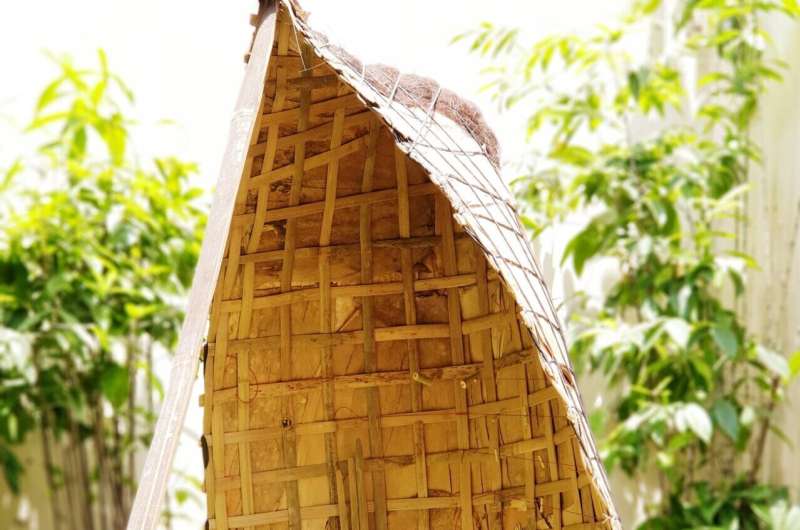This article has been reviewed according to Science X's editorial process and policies. Editors have highlighted the following attributes while ensuring the content's credibility:
fact-checked
trusted source
proofread
Singing in the rain: Why the bundengan sounds better wet

A bundengan wears many hats—and is one too. This portable shelter woven from bamboo has protected Indonesian duck herders from the sun and rain for centuries. Able to comfortably balance on the wearer's head, a bundengan is equipped with a visor that curves around the side to meet at a long back. A more surprising, but no less practical, feature is the collection of strings and bamboo bars added in to produce music. Duck herders fill the hours spent tending to ducks sitting underneath their outfitted shelter, playing their shield as an instrument.
Over the years, bundengan musicians learned that their bamboo music-maker sounds better when played in the rain. Gea Oswah Fatah Parikesit and their team at Universitas Gadjah Mada investigated the physics behind this phenomenon and are presenting their work on the water-dependent acoustic properties of the bundengan Dec. 6, as part of Acoustics 2023, running Dec. 4–8 at the International Convention Center Sydney.
The bundengan is constructed by weaving bamboo splits, which are covered by overlapping bamboo culm sheaths with ropes to secure everything in place.
"Our team discovered that the key to the sound quality is in the bamboo culm sheaths," said Parikesit. "To understand the physics of the sheaths, we first had to understand its biological context. When the sheaths were still attached at the bamboo stem, they gradually change shape: First, they are curled because they need to protect the younger parts of the stem, but afterward, they have a more planar shape because they no longer need to protect the older part of the stem."
When wet, the culm sheaths seek to return to their curled form, but tied down in their planar formation, they instead press into each other. The resulting tension allows the sheaths to vibrate together.
Parikesit will continue investigating the physics of the bamboo culm to develop new musical instruments that, like the bundengan, perform best when wet.
"As an Indonesian, I have extra motivation because the bundengan is a piece of our cultural heritage," said Parikesit. "I am trying my best to support the conservation and documentation of the bundengan and other Indonesian endangered instruments."
Provided by Acoustical Society of America





















